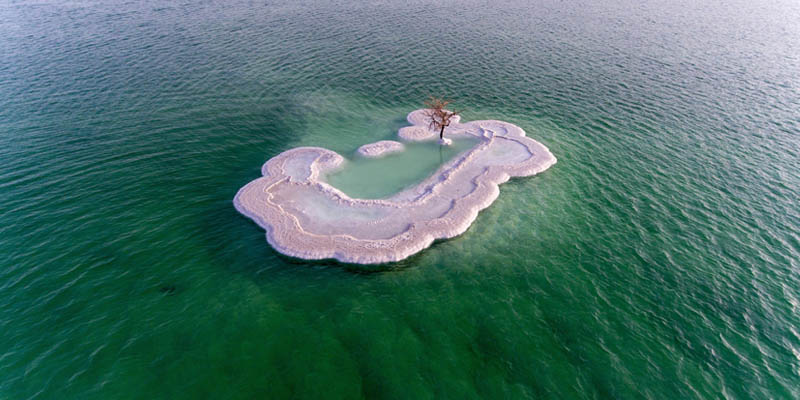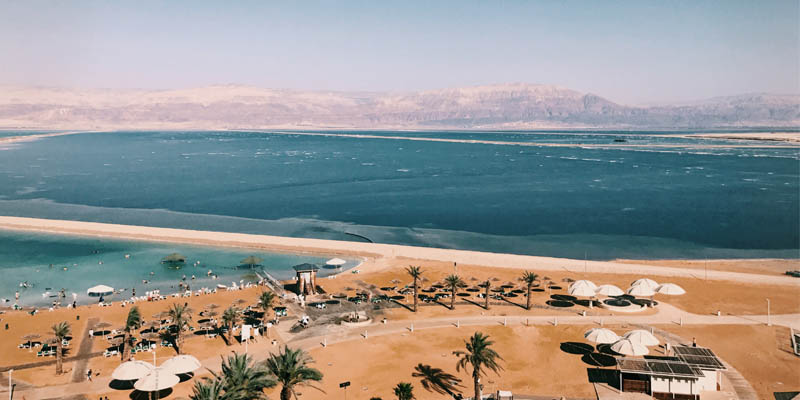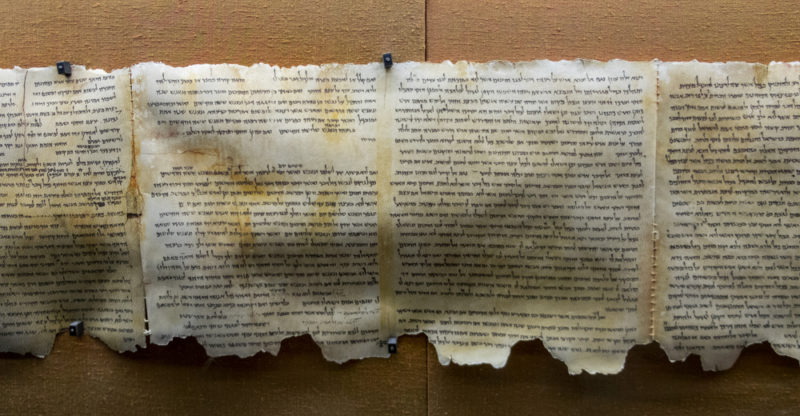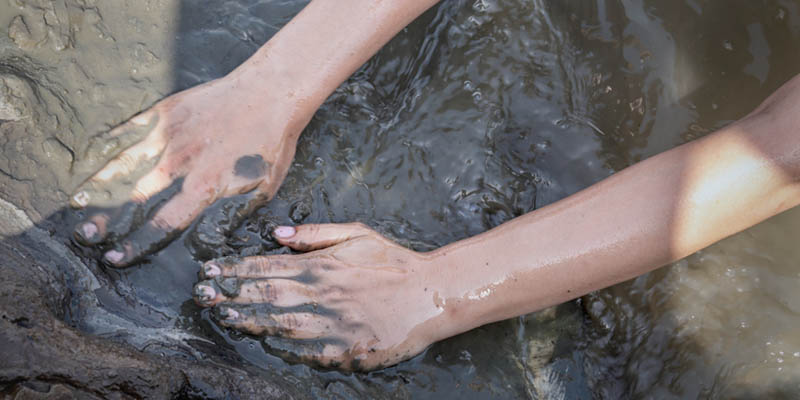We explore the Dead Sea, and describe its climate, flora and fauna. In addition, we discuss the importance of its salts and minerals.

What is the Dead Sea?
The Dead Sea is the name given to a salt lake located in the Jordan Rift Valley between Israel and Jordan. Its name in Hebrew is Yam hamMelaḥ, and in Arabic Al-Baḥr Al-Mayyit.
The Dead Sea receives water from several tributaries, the most significant being the Jordan River (its main tributary) and the Yarmuk River. Unlike other lakes, it has no effluents, which means that no rivers or streams flow from it into other bodies of water.
The absence of drainage is one of the reasons for the water of the Dead Sea being so salty. Since the rivers that flow into it have no outlet, the concentration of minerals in the water increases over time, resulting in the accumulation of salts and minerals.
The Dead Sea region is extremely hot and dry, leading to high levels of evaporation. As water evaporates, the dissolved minerals and salts become more concentrated, increasing water salinity.
How did it get its name? Due to the extreme salinity of its waters, there is no aquatic life in the Dead Sea (except for a few microorganisms), hence the origin of its name.
The Dead Sea is used by Israel and Jordan for the extraction of salts and other minerals of commercial and industrial value through controlled water evaporation processes. It is also a major world tourist attraction as well as a site of historical importance in the region, being mentioned in the Bible and other ancient texts such as the Book of Kings and the Dead Sea Scrolls.
- See also: Red Sea
How was the Dead Sea formed?
The Dead Sea lies in a rift valley, that is, a depressed zone of the crust, stretching from the Jordan Valley in the north to the Gulf of Aqaba in the south, along the boundary between the African and Arabian plates.
The formation of the Dead Sea began approximately 3 million years ago, during the Pliocene Epoch, when the fault where the Jordan River lies began to spread. This tectonic movement caused the Jordan Rift Valley to gradually sink and the surrounding land to rise. This accounts for the fact that the Dead Sea basin is landlocked.
Characteristics of the Dead Sea

Among the main characteristics of the Dead Sea are:
- Location and extent. The Dead Sea is located in the Middle East, between Israel and Jordan. It is 42 miles (67 km) long and 11 miles (18 km) wide, and sits at 1,411 feet (430 m) below sea level. It is the deepest non-oceanic place on Earth, at about 985 feet (300 m) at its deepest point.
- Climate. The climate of the Dead Sea is extremely hot and dry throughout the year. Maximum temperatures can reach 113 °F (45 °C) in the summer, and minimum temperatures can drop to around 68 °F (20 °C) during the winter. Rainfall is scarce and occurs mainly in the winter.
- Flora and fauna. Due to its extreme salinity, there is virtually no life in the Dead Sea. Only halophilic microorganisms such as bacteria, fungi, and algae can be found in its waters.
- Chemical properties of the water. The salt content in the Dead Sea is about 34.2%, well above that of oceans, which is about 3.5%. In addition to salt, the Dead Sea water contains other minerals such as magnesium, potassium and calcium, giving it healing and therapeutic properties. High salinity also causes the density of the water to be higher, which makes floating easy. Due to its high salinity, it is considered both a lake and a sea.
- Medicinal properties of the water. The waters of the Dead Sea are noted for their medicinal and therapeutic properties due to high concentrations of salts and minerals. These properties have been proven to help treat skin conditions such as psoriasis, acne, and dermatitis. They are very effective in treating rheumatic diseases and respiratory problems. Moreover, it is believed that bathing in the Dead Sea can improve blood circulation and relieve stress.
Environmental issues in the Dead Sea
The Dead Sea is currently in a critical environmental situation due to a number of problems that have arisen in recent decades, the major being:
- Decline in water level. The water level of the Dead Sea has steadily decreased in recent decades due to a reduction in the flow of water from the Jordan River. This is largely due to the excessive use of water for agricultural and industrial purposes by the State of Israel and Jordan.
- Water pollution. The Dead Sea is increasingly polluted due to the discharge of wastewater and the inadequate treatment of waste from mining activities extracting salts and minerals from its waters.
History of the Dead Sea
The Dead Sea is a site of great historical and religious significance. The Bible mentions the cities of Sodom, Gomorrah, Zeboim, Segor, and Admah, situated on the shores of this lake. It is also mentioned as the place where King David found refuge and extracted salt for trade.
Although no archaeological remains of these cities have been found, manuscripts discovered in caves near the Dead Sea are evidence that humans have inhabited the region since thousands of years ago.
During the Roman period, the Dead Sea became an important center for salt production, the region being a place of conflict and conquest among the major empires of the time. During the Middle Ages, the region was ruled by various peoples such as the Ottomans and the Mamluks, and the Dead Sea continued to be a major source of salt.
Following World War I, the Dead Sea region was occupied by British forces. In 1948, after World War II, it came under Israeli control.
Dead Sea Scrolls

In 1947, around 900 manuscripts known as "the Dead Sea Scrolls" or "Qumran scrolls" were discovered on the shores of the Dead Sea. They were found inside caves, and are believed to date from 250 BC to AD 66.
While most of the manuscripts are written in Hebrew, there are some in Aramaic and Greek. They contain a variety of religious and literary texts which are believed to be the earliest surviving manuscripts of what is recounted in the Bible.
Tourist attractions
Among the most important tourist destinations in the Dead Sea region are:
- The Qumran caves. It is the site where the Dead Sea Scrolls were discovered. The caves are located about 12 miles (20 km) south of the city of Jericho.
- Ein Gedi Nature Reserve. A site of springs and thermal waters, it is located about 9 miles (15 km) north of the Dead Sea.
- Masada National Park. One of the most important archaeological sites in the State of Israel, it is located about 12 miles (20 km) southwest of the Dead Sea.
- Ein Bokek. A tourist and resort district located on the shores of the Dead Sea.
Economic importance

The Dead Sea is of great economic significance to Israel and Jordan, mainly as a source of minerals. The extraction of salts and minerals from the Dead Sea is a major industry in the region. These minerals are used in the cosmetic industry, chemical manufacturing, and agriculture.
Tourism is also a major industry in the region, driven by the popularity of the Dead Sea as a health and wellness destination due to the healing properties of its waters and mud. In addition, the Dead Sea region is a place of cultural interest for its historical and religious sites, such as Masada and Jericho, which attract visitors from all over the world.
Explore next:
References
- Bubis, M (1998). El mar Muerto. Un mar insólito. Repositorio institucional de la UNLP.
- Fundación Aquae (s.f). El mar más salado del mundo. FundacionAquae
- Geoenciclopedia (2022). Mar muerto. Geoenciclopedia
- Vázquez Allegue, J. (s.f). Qué se sabe de los manuscritos del mar Muerto. Evd
Was this information useful to you?
Yes NoThank you for visiting us :)